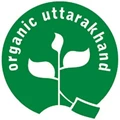
According to project officials, animals such as monkeys, bears, and elephants would find the intense fragrance of plants such as Damask rose, lemongrass, or Japanese mint repulsive and would avoid them.
'Aromatic plants would bring more profits than traditional crops,' they added, noting that this is the first such initiative in India. Farmers are expected to profit more from aromatic plants than from traditional crops such as wheat and pulses.
"There is a rising and strong demand for aromatic products, particularly in the luxury segment, that farmers can meet," said Nirpendra Chauhan, director of the Centre for Aromatic Plants (CAP) in Dehradun. CAP officials said that valleys larger than 500 hectares will be chosen for aromatics planting, and that they have assigned a specific plant to each valley based on its conditions, taking into account preliminary factors such as soil suitability, temperature, irrigation channels, and so on.
Farmers will be instructed to grow a single aromatic plant in a valley rather than several. Nainital and Chamapwat, for example, will have cinnamon valleys, whereas Uttarkashi will have'surai' or Himalayan Cypress valleys, Chamoli and Almora will have Damask rose valleys, Pauri will have lemongrass valleys, and Haridwar will have lemongrass and Japanese mint valleys.
Japanese mint valleys will also be available in Udham Singh Nagar. In addition, the state forest department had experimented with repelling animals using aromatics by planting some in the forest fringes of Haridwar and Terai landscapes. "Our pilot projects produced promising results.
So we're moving forward with commercialization, with profit for farmers as the primary goal. Uttarakhand currently has 109 aroma clusters, each about 20 hectares in size. "Over 7,000 hectares of land are under cultivation by 20,000 farmers," Chauhan said. "Agricultural land in Uttarakhand is primarily fed by rains, and rainfall patterns have recently become erratic," he added.
"We need to find alternative crops that can withstand extreme weather conditions in order to keep farming a profitable and viable option." The majority of the aromatics to be planted have various fragrances and can be used by perfumers, spa centres, and the hotel industry. Officials hope that the initiative will bring aroma processing companies to Uttarakhand, creating jobs for the locals.
In terms of the aroma valleys' tourism prospects, Chauhan stated that they are planning something similar to the rose festival held in Bulgaria's Kazanlak valley in June, where people gather in traditional attire to pluck the country's famous Damask roses (also called the Bulgarian rose). The Balkan country is well-known for producing rose oil.











